Achievements

On July 13, 1999, His Highness issued Amiri Decree No. (11) of 1999 stipulating the establishment of a competent committee to prepare the draft of a permanent constitution in line with the country's progress and development. His Highness received the draft of the new constitution on July 2, 2002.
On April 29, 2003, a public referendum overwhelmingly approved draft constitution by 96.6%. The large turnout in the ballot boxes further demonstrated the response of the Qatari people to the appeal made by His Highness the Amir.
On June 8, 2004, the Permanent Constitution of the State of Qatar was issued, stating in its preamble the essential and guiding principles of the State’s policy and the organization of authorities and system of rule, laying out the basic pillar for the society, embodiment of popular participation, guaranteeing the rights and freedoms for the citizens.

The foreign policy of the State of Qatar is based on the principle of consolidating international peace and security, promoting peaceful settlement of international disputes, mutual respect and common interests, peaceful coexistence and international cooperation, adherence to the values of justice and openness and respect for human rights. To that end, Qatar is keen on practicing the principles of good neighborliness, avoiding interference in the internal affairs of states, supporting the right of peoples to self-determination.
The foreign policy of Qatar in the era of His Highness accomplished many feats, including:
- Establishing the Qatari Committee for the Rescue of Jerusalem in April 1996 to support the Palestinian cause and defend Islamic holy sites in Palestine.
- Sponsoring talks between the Taliban in Afghanistan and the US in order to find a solution to the conflict in Afghanistan.
- Mediating the Lebanese reconciliation in 2008 with the Doha Agreement.
- Sponsoring the Agreement signed between the Republic of Djibouti and the State of Eritrea on June 6, 2010.
- Signing of the Doha Document for Peace in Darfur in 2011 after more than two years of Qatari mediation.
- Leading successful mediation efforts that resulted in the resolution of the dispute between Sudan and Eritrea, and the opening of the Kassala- Al Laffa road in 2011 to promote confidence-building between the two countries.
- Signing of the Palestinian reconciliation agreement between the Palestinian factions - "Doha Declaration"- on February 6, 2012.
- In October 2005, Qatar received the non-permanent membership of the UN Security Council for two years and chaired the Council in October 2006.
- Qatar presided over the 66th session of the United Nations General Assembly in 2011-2012.
- Sponsoring several international and regional conferences and establishing international forums to promote the principle of dialogue and understanding between nations and peoples, such as the U.S.-Islamic World Forum, the Doha Forum on Democracy, Development and Free Trade, and the Doha Interfaith Conference which led to the establishment of the Doha International Center for Interfaith Dialogue by Amiri Decree on June 1, 2010 in the aim of promoting peaceful co-existence among adherents of religions and activating religious values to address problems and issues of concern to humanity.
- In March 2013, HH chaired the 24th ordinary session of the Arab League Council at the Summit Level hosted by Qatar, where the National Coalition for Revolutionary Forces and the Syrian Opposition held the seat of the Syrian Arab Republic in the League of Arab States.
- At the summit, HH launched an initiative to establish a fund for the support of Jerusalem with a capital of one billion US dollars to fund projects and programs that preserve the Arab and Islamic identity of Al-Quds Al-Sharif and to strengthen the steadfastness of its people and to enable the Palestinian economy to develop its own capacity, to disassociate itself from the Israeli economy, and to counter the policy of isolation and siege. Qatar contributed a quarter of a billion dollars to the fund.
- In March 2013, His Highness also announced the donation of the State of Qatar by 10 million US dollars as a contribution to establish a pension fund for the staff of the General Secretariat of the League of Arab States, which was received by the General Secretariat on December of the same year.
- In order to serve the Muslims and introduce the teachings of Islam, His Highness has contributed to the financing of cultural, educational and religious centers in different countries in the world.
- During the rule of HH, the State of Qatar assisted and provided aid to many countries that were affected by natural disasters. For instance, when Japan was hit by the earthquake and tsunami disaster on March 11, 2011, HH donated 100 million US dollars to Japan, through the Qatar Friendship Fund, to assist relief efforts and accelerate the rehabilitation of victims. The Qatar Katrina Fund also donated 100 million US dollars to the United States after Hurricane Katrina in 2005.
- In October 2012, HH was the first head of state in the world to visit Gaza during a suffocating siege.

In 2007, under the guidance and leadership of His Highness, the Qatar National Vision 2030 was prepared and approved in 2008.
The National Vision prompted a more modernized way of thinking, opened new horizons and defined the features of the society that the government and people of Qatar aspire to establish.
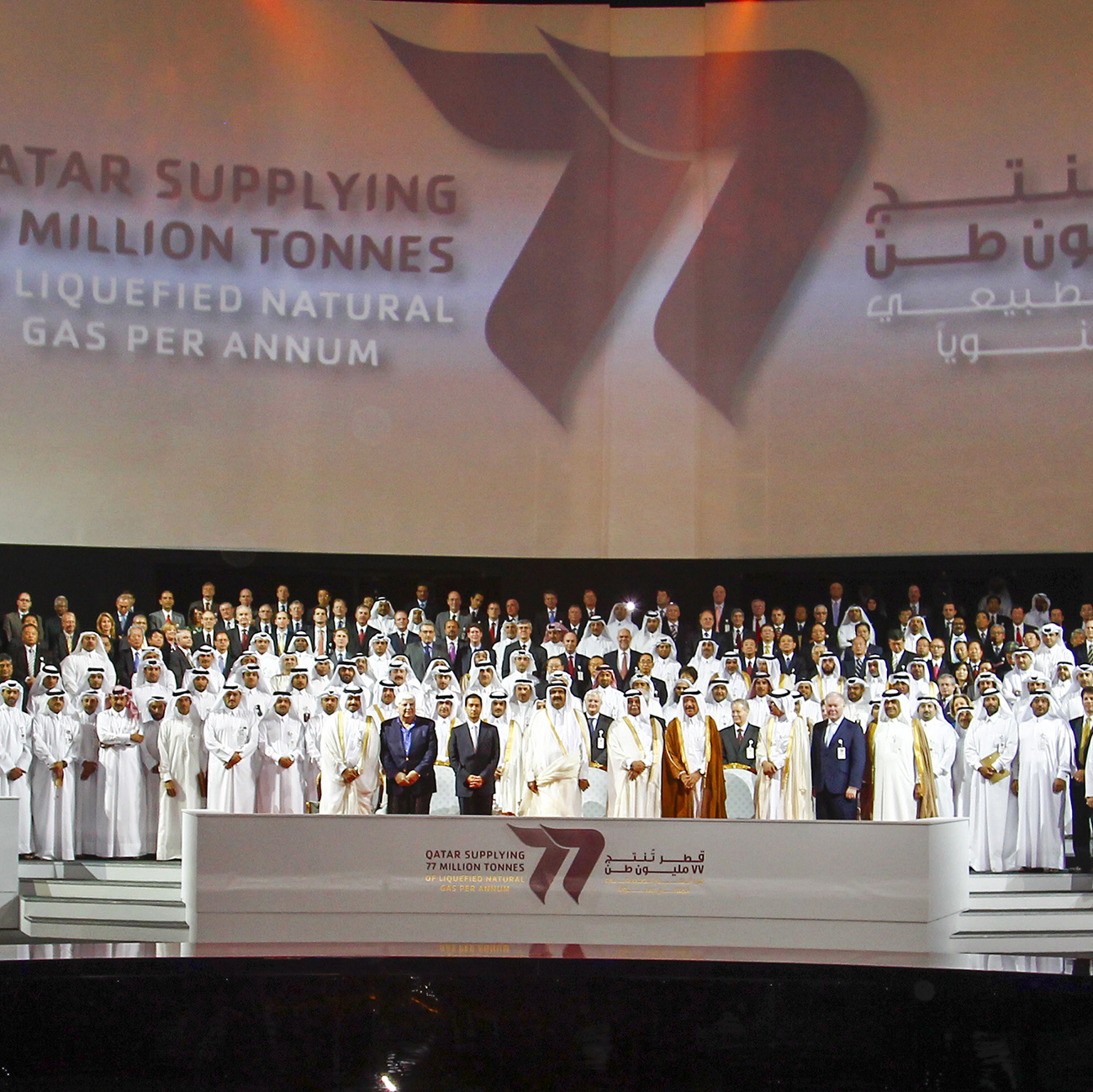
Qatar's success in the development of the energy sector was the result of vigorous national efforts, ambitious aspirations and bold decisions led wisely and determinedly by His Highness. This required overcoming many obstacles.
The 1980s saw a sharp decline in oil production due to field obsolescence. Production declined from 500,000 bpd in the 1970s to 300,000 bpd in 1987.
However, the efforts exerted by the State of Qatar, since His Highness took over the reins of power, increased production to 680,000 barrels per day in 2000, and to 760,000 barrels per day in 2005.
The first shipment of liquefied natural gas (LNG) was exported in late 1996 ushering a major economic breakthrough, which became evident in 2006 when Qatar became the world's largest liquefied natural gas exporter and in 2010, when its production capacity reached 77 million tons of liquefied natural gas annually. At a ceremony held in Ras Laffan Industrial City, His Highness said, "Qatar is celebrating the achievement of one of its historic goals with a feat that will be forever etched in the history of the international gas industry as the day when Qatar officially became the world's leading producer of liquefied natural gas."
Currently, Qatar exports gas to markets in Asia, Europe, the Americas and Africa.
In 1989, His Highness took the decision to establish the Ras Laffan Industrial City as a center for the gas industry in Qatar to export liquefied natural gas. At the time, he was faced with two choices either establishing an industrial city in Mesaieed or in Ras Laffan, he chose the latter for its proximity to gas fields, which allows it to be in line with Qatar's goals of gas production. Ras Laffan Port is now the largest facility of its kind in the world. On the other hand, Mesaieed is the second largest industrial city in Qatar housing many industrial facilities.
The state has converted gas to liquids for the sake of having an integrated system for gas production and exportation to benefit from the opportunities in the world markets; and to that end has set up the Oryx and Pearl projects. Launched in 2006, the Pearl began its export activities in 2011 and boasts the world's largest GTL plant.
The development of the energy sector also included projects in oil and petrochemicals based on partnerships with international oil companies through oil production sharing agreements and through joint venture agreements with specialized companies in the field of petrochemicals.
The development of the northern fields gave additional impetus to the expansion of the petrochemical industry. Additional quantities of methane increased the production capacity of ammonia and urea and enabled the state to move to downstream industries.
Additional quantities of ethane also contributed to the addition of new ethylene plants and the emergence of new industries such as the production of high and low density polyethylene, and many other products.
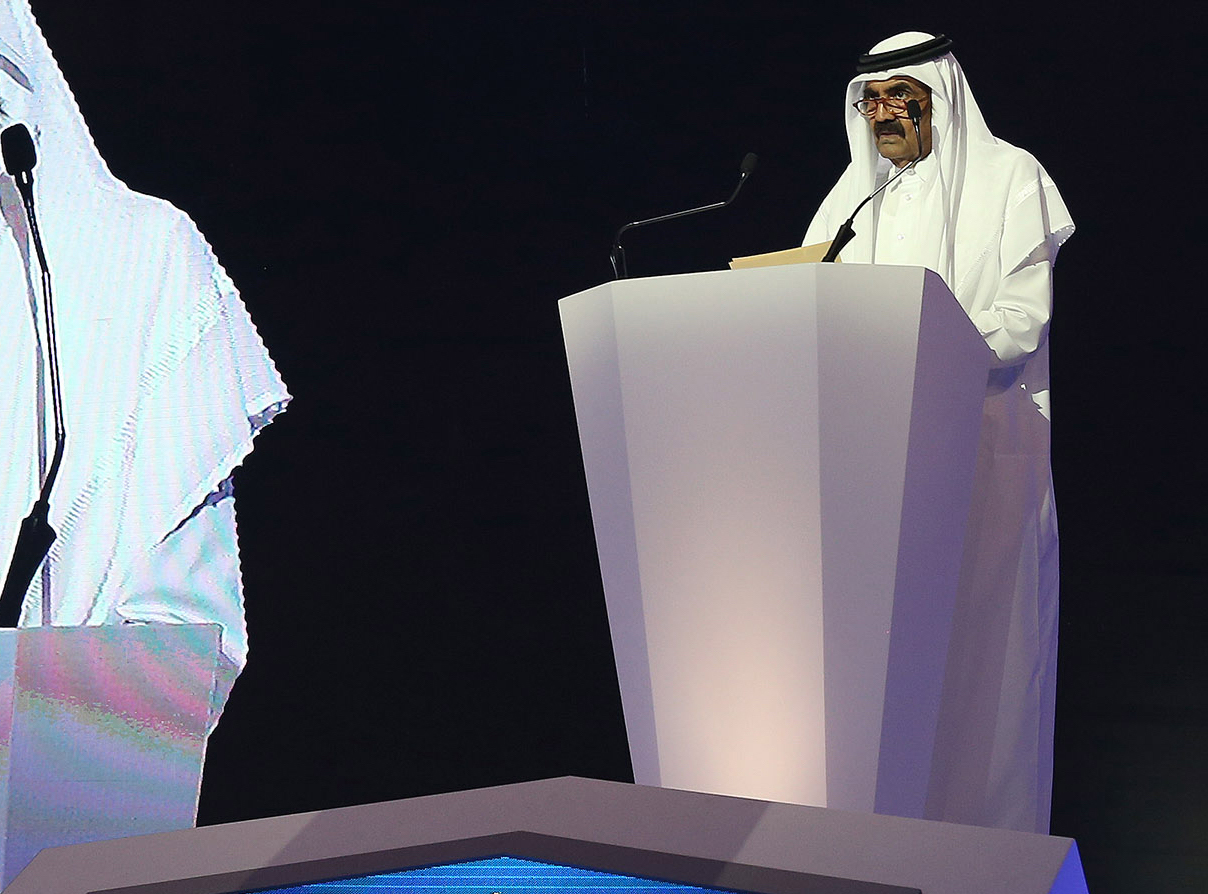
During the rule of His Highness, a number of locally, regionally and internationally leading and groundbreaking achievements took place within communication and media spheres:
- Censorship of the local press was lifted in October 1995 and Law No. (25) of 1995 was issued on the protection of intellectual works and copyright.
- In 1996, Al Jazeera News was established ushering in a new era in the region. In 2006, it expanded to become Al Jazeera Media Network with several channels under its umbrella.
- On May 3, 1997, His Highness established the Qatar General Authority for Radio and Television which, on March 18, 2009, became the Qatar Media Corporation. It governs all audiovisual media in the state.
- On March 30, 1998, His Highness abolished the Ministry of Information to make room for the freedom of the media and the press.
- In 2004, the Supreme Council for Information and Communication Technology (ICT) was established to organize the ICT sector, build a knowledge-based society and create a sophisticated technological infrastructure.
- On October 6, 2010, His Highness established the Qatar eGovernment Steering Committee to ensure the highest performance rates in governmental electronic transactions.
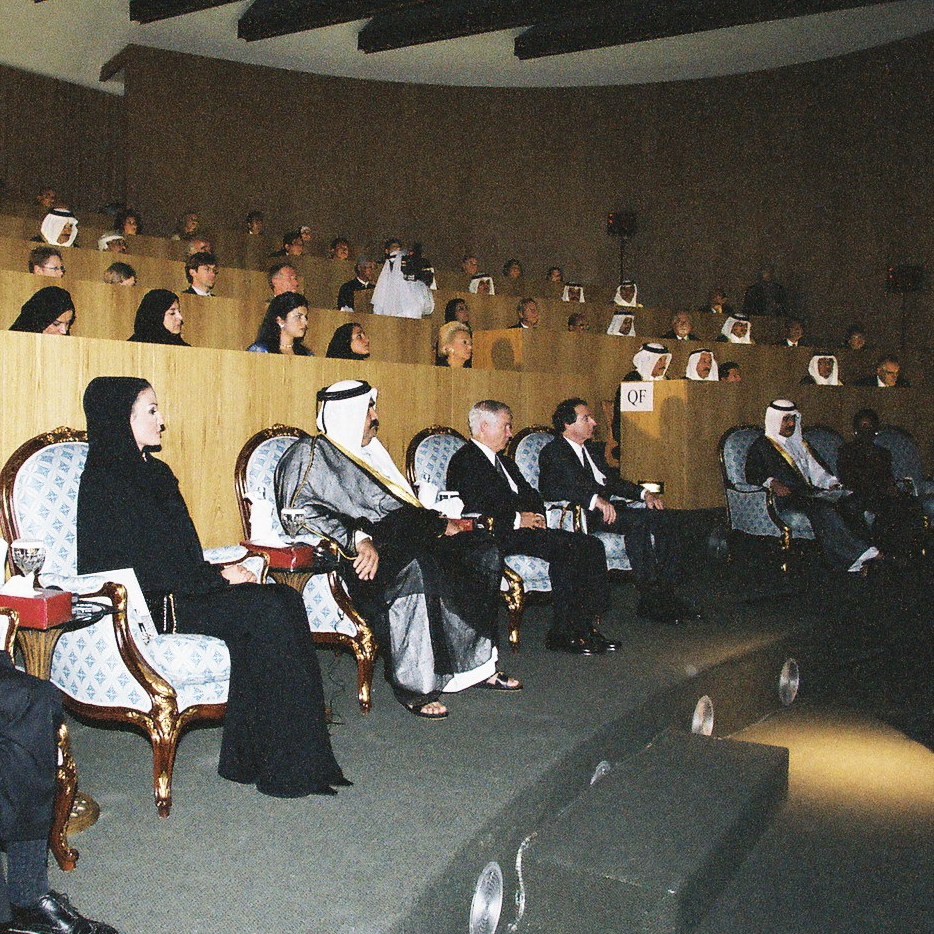
Human development was the main focus of His Highness' strategy, as affirmed by the Qatar National Vision 2030.
The State of Qatar has launched a wide educational renaissance characterized by an increase in the number of schools and universities, the development of curricula and teaching methods, the provision of modern educational means, and the openness to international experiences in education. Specialized colleges and technical schools have emerged; Education City was inaugurated in 2003 and includes a number of educational, scientific, research and cultural institutions. As per Decree Law No. 24 of 2008, 2.8% of government revenues in the state budget were allocated to support scientific research.
In 1995, Qatar Foundation for Education, Science and Community Development was established. As a cultural and educational institution, its mission is to nurture the future leaders in the state of Qatar and develop their capabilities through the consolidation of the culture of excellence and innovation in society. Now Qatar Foundation houses a number of leading international universities and research centers, among them is the Hamad Bin Khalifa University established in 2010.
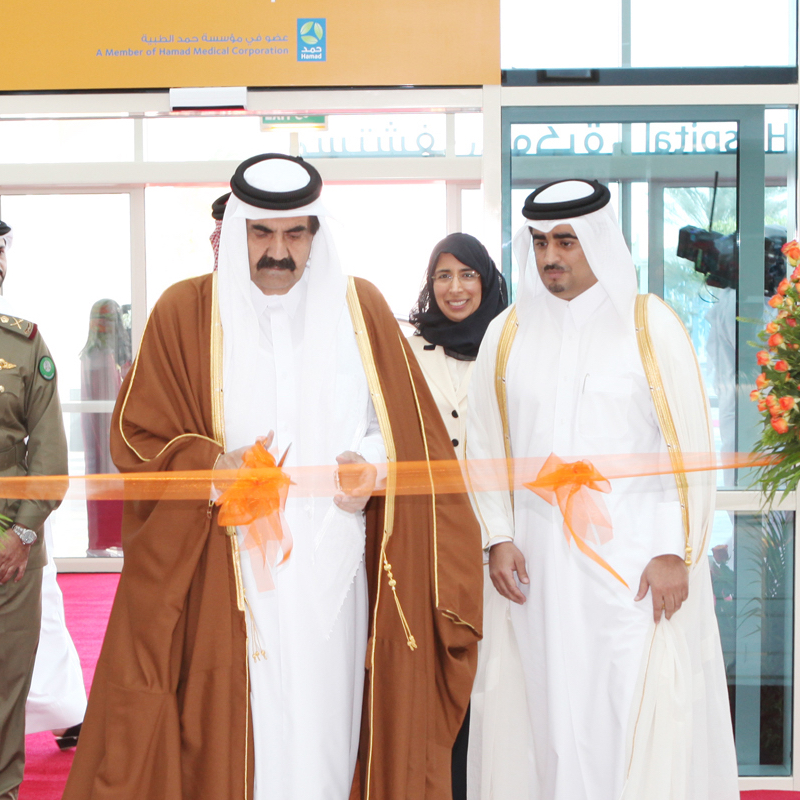
During the rule of HH the Amir, the State of Qatar has paid great attention to the developing the health sector and bolstering its performance. The number of hospitals in the country increased from only four in 1998 to 13 in 2012:
Al Khor Hospital (opened 2005), Al Amal Hospital (2006), the Heart Hospital (2011), Cuban Qatari Hospital (2012) and Al Wakra Hospital (2012).
Aspetar Hospital is considered the first hospital in the region specialized in orthopedic and sports medicine. It includes highly skilled international experts in the field of sports medicine and orthopedics. It was chosen as FIFA Medical Centre of Excellence in 2008.
Further, there have been many achievements in the health sector, including:
- Implementation of the comprehensive health insurance system for citizens in 2011.
- Development of Hamad Medical Corporation to provide the best health services. It is the first hospital in the Middle East to obtain institutional accreditation from the American Accreditation Council for Graduate Medical Education (ACGME-1).
- The Sidra Center for Medicine and Research was launched in 2004 to enhance and promote health care throughout the country and to provide opportunities in the field of medicine, research and education.
- Inauguration of the Weill Cornell Medicine- Qatar in 2002. WCM-Q is a college renowned for the use of technology in medical research.

The infrastructure projects in the country were diverse and covered many areas:
- Construction of towers and high-rises in the Al-Dafna area to provide a business environment suited to the different sectors of the state.
- Construction of Hamad International Airport, one of the largest airports in the region. Works began in 2005 and operations launched in April 2014.
- On June 6, 2011, His Highness established the Qatar Railways Steering Committee (Rail) which later on became Qatar Rail. It is a mega project comprising three major projects: Doha Metro, Lusail Light Transit, and the Long Distance Rail for the transport of people and goods.
- Existing projects to improve and develop different roads in the country.
- In 2007, His Highness ordered the construction of the new Doha Port, with a total capital of 27 billion riyals. This project is one of the largest green projects in the world. It covers an area of more than 26 square kilometers in a strategic area located south of Doha and includes the new Doha Port, the new Amiri Naval Base, and the Third Economic Zone. His Highness Sheikh Abdullah Bin Hamad Al Thani, Deputy Amir, inaugurated the project on February 26, 2015 and was named Hamad Port.
- In December 2011, Qatar National Convention Center, the largest of its kind in the Middle East, opened its doors.
- Lusail City Project: Lusail City was established in December 2005 and is designed to be the world's largest city built to meet sustainability standards and to reflect the Qatar National Vision 2030 for real estate development. The city will include a light rail network, a water taxi system and an extensive pedestrian path and bicycle route.
- Musheireb Project, the Heart of Doha: His Highness laid the foundation stone for this project in January 2010. It is a real estate project inspired by the Qatari architectural heritage to develop the old commercial district and is the first sustainable development project of a city center in the world. It has a value of 20 billion riyals and extends over an area of 31 hectares in the heart of Doha.
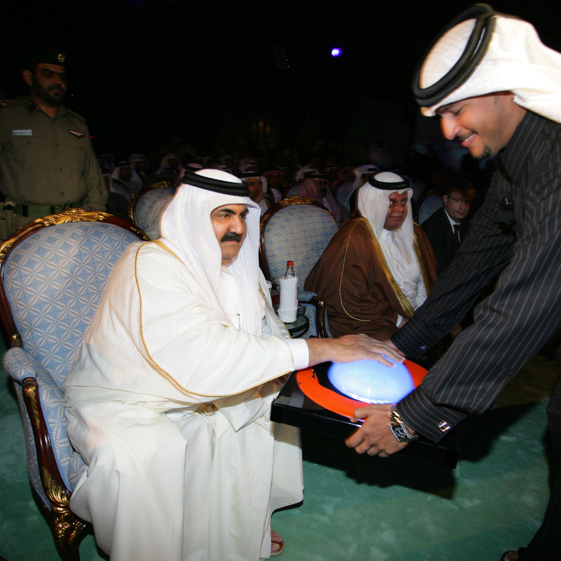
The growth of the energy sector was the main driver of economic development during the rule of HH. The contribution of the hydrocarbon sector to the GDP increased from 37% to 54%. The value added of this sector increased from QAR 11 billion to about 403 billion, i.e. an increase of 22.2% at current prices, while the growth rate reached 11.4% at constant prices (2004 prices).
The size of this contribution has had a significant impact on other economic indicators:
- Gross domestic product (GDP) at current prices increased from about 30 billion riyals to about 735 billion, which is equivalent to 24.5 as it was during the first period and an annual increase of 19.5% during the same period. At constant prices, this output is more than seven times the annual increase of 11.7%.
- GDP per capita increased from QAR 60,000 to QAR 370,000, i.e. an annual increase of 10.6%. This large increase made the GDP per capita one of the highest in the world, much higher than that developed countries.
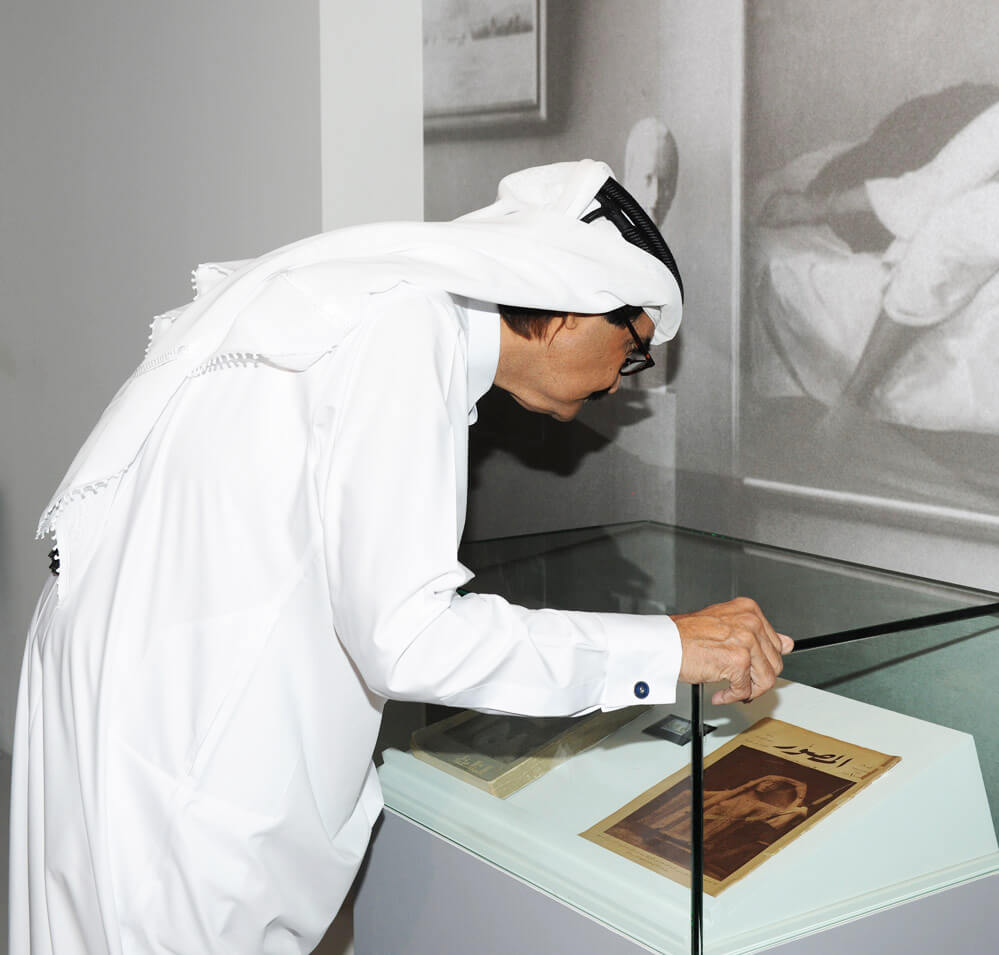
During his rule, the State of Qatar sponsored many cultural festivals and intellectual forums, and many cultural and heritage institutions have been established through which the history and heritage of Qatar has been revived. The most important cultural projects were:
- Souq Waqif: one of Qatar's most prominent heritage, tourism and commercial landmarks. It started as a popular market and a meeting place for the people of Qatar in the 1920s. It stood witness to the Pearl Era, and was restored while preserving its architectural and historical identity.
- Qatar Museums Authority was established in 2005 to oversee and reorganize state museums. The fruits of this work were:
- The Museum of Islamic Art, which opened in 2008 and is one of the most important architectural landmarks in the region, was designed by world renowned architect I.M. Pei.
- The Arab Museum of Modern Art "Mathaf" opened in 2010.
- The reconstruction of the Qatar National Museum, an art project that explores Qatari heritage past to present. The famous architect Jean Nouvel designed the museum and was inspired by the Desert Rose (Al-Awsaj). It is built around the old palace of His Highness the late Sheikh Abdullah Bin Jassim Al Thani, which was his family home and the government headquarters for 25 years.
- The Cultural Village (Katara): opened in 2005 to promote the cultural movement and empower creative potentials. It is one of the largest cultural projects in the country.
- It is worth mentioning that during the rule of His Highness, Qatar began celebrating its National Day (since 2007) in commemoration of the founder Sheikh Jassim bin Mohammed bin Thani and the day he assumed power on December 18, 1878.

The contribution of the non-hydrocarbon sector increased -affected by hydrocarbon revenues - from around QAR 18.7 billion at current prices, at the beginning of the rule of His Highness, to about QAR 332 billion at the end of his reign; i.e. an annual increase of 17.3% at current prices, while at constant prices this increase was 12% annually .
The following are some developments that occurred on some of the components of this sector during the period 1995-2013:
- The manufacturing sector registered a 9.4% annual growth rate at constant prices.
- The growth of the construction sector was remarkable, it was estimated at 17.8% annually at constant prices.
- Distribution, trade, hotels and restaurants sectors also witnessed high growth rates reaching 18% at current prices and 13.1% at constant prices.
- The transportation and communications sector also registered increased growth with a growth rate of 17.6% per annum at constant prices.
- Government final consumption expenditure rose from about 9 billion riyals to about 99 billion, an increase of 14.3% annually at current prices.
- Household consumption expenditure increased from about 8 billion to 102 billion riyals, an increase of 15.2% annually.
The remarkable economic growth witnessed by the country during this period was accompanied by similar growth in the size of foreign trade and trade surplus:
- Exports of goods and services increased from about 13 billion to about 538.5 billion riyals, an annual increase of 22.9%. The increase in exports was mainly due to the expansion in LNG and oil production and the increase in their prices.
- Imports of goods and services increased from QAR 12.8 billion to QAR 214.6 billion, an annual increase of 17%. This was mainly due to an increase in imports of consumer goods and in the requirements of major state projects.
- The surplus of the commodity trade balance increased from 1.7 billion riyals to about 387 billion, with an increase of 35% per annum.

Social sector had seen major achievements illustrated as follows:
- In 1996, increasing the social security for some categories by 50%. These were: widows, divorcees, needy families, persons with disability, orphans, those unable to work, elderly, families of prisoners, abandoned wives and families of missing persons.
- In 1999, municipal elections were held in which women won their right to run for election for the first time in the history of Qatar.
- In aim of building a prosperous Qatari society, pensions were increased by 40% in 2006, in addition to a 40% increase in the basic salaries of civil servants. This continued in 2011, when the salaries of civil servants working for governmental entities increased by 60% and military salaries increased by 120%.
- In 2007, His Highness established the Ministry of Labor and Social Affairs, replacing the Ministry of Civil Service and Housing Affairs, to develop labor force policies and plans, manage the labor market, build an integrated information system, settle labor disputes in accordance with the law, participate in the development of Qatarization policies, provide social services to eligible persons and regulate the disbursement of social aid.
- In 2010, the Social and Sports Activities Support Fund (DAAM) was established to support sports, cultural, social and charitable activities through the provision of grants to sports, cultural, social and charitable organizations, institutions, associations and centers.
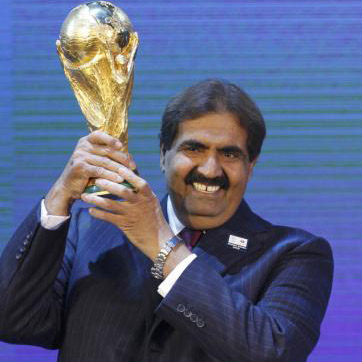
During the rule of His Highness sports infrastructure developed quickly, and the State of Qatar hosted many events and sports championships that established high standards organization-wise, and made Qatar the sports capital in the region.
Doha hosted the World Table Tennis Championship in 2004, the World Weightlifting Championship in 2005, the 15th edition of the Asian Games in 2006, the 2010 World Indoor Championships in Athletics “Doha 2010”, the 2011 Asian Cup, and the 12th Pan Arab Games “Doha 2011” and the 9th World Congress on Sport and the Environment in the same year.
In 2008, Aspire Academy was established to provide a high-quality sports environment that enhances the level of sport and prepares athletes in various sports disciplines to meet the needs of the Qatari society and achieve its sporting ambitions regionally and globally.
The most notable sports achievement during his rule was in 2010 when Qatar won the bid to host the 2022 FIFA World Cup.
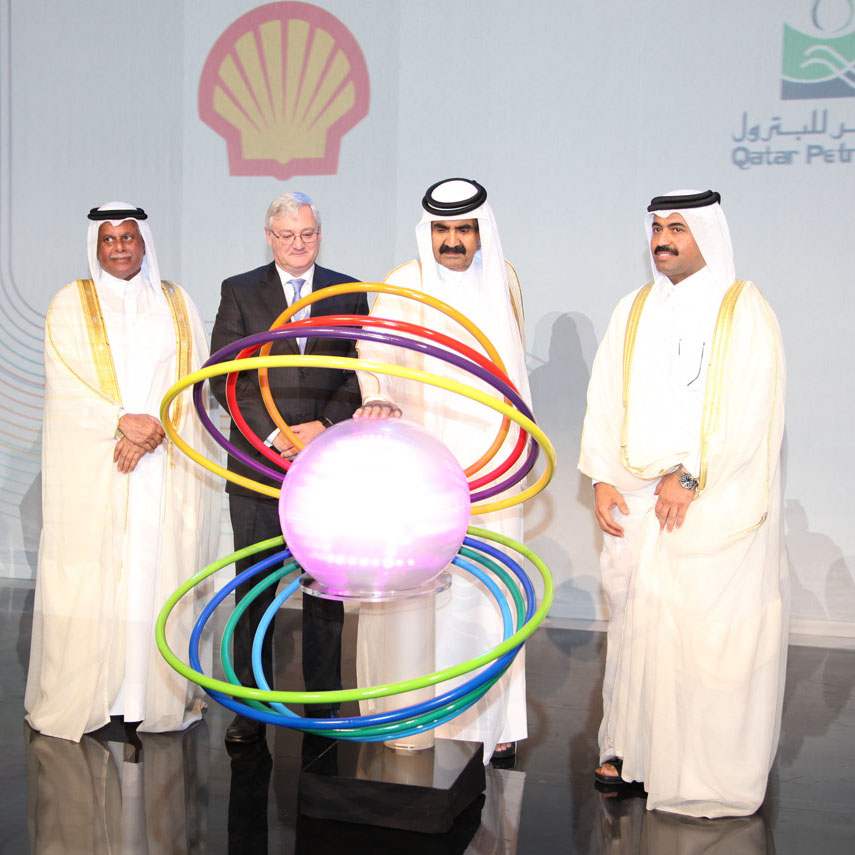
In 2000, the Supreme Council for the Investment of State Reserves was established to manage and invest the State's reserves. On October 23, 2001, His Highness set up the Supreme Council for Economic Affairs and Investment to undertake, in general, all matters related to economy, energy and investment, as well as the development of economic, financial, trade and energy policies.
On June 23, 2005, His Highness established the Qatar Investment Authority, which is affiliated to the Supreme Council for the Investment of State Reserves, with the aim of developing, investing and managing state reserve funds and other funds entrusted to it by the Supreme Council.
On February 20, 2011, HH established the Qatar Authority for the Development of SMEs to encourage entrepreneurship, promote existing projects and increase the contribution of projects to the GDP. The Authority later became part of Qatar Development Bank.